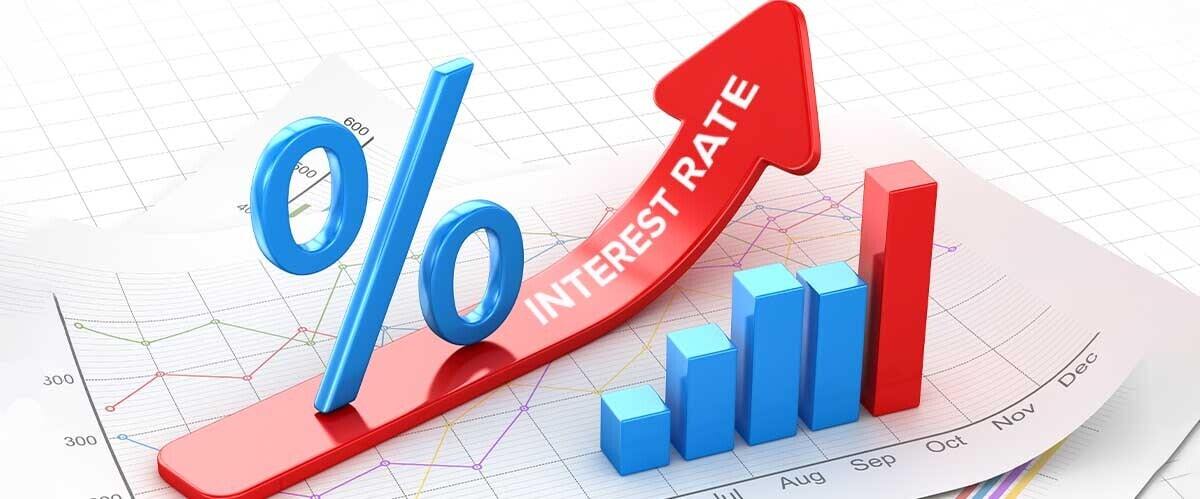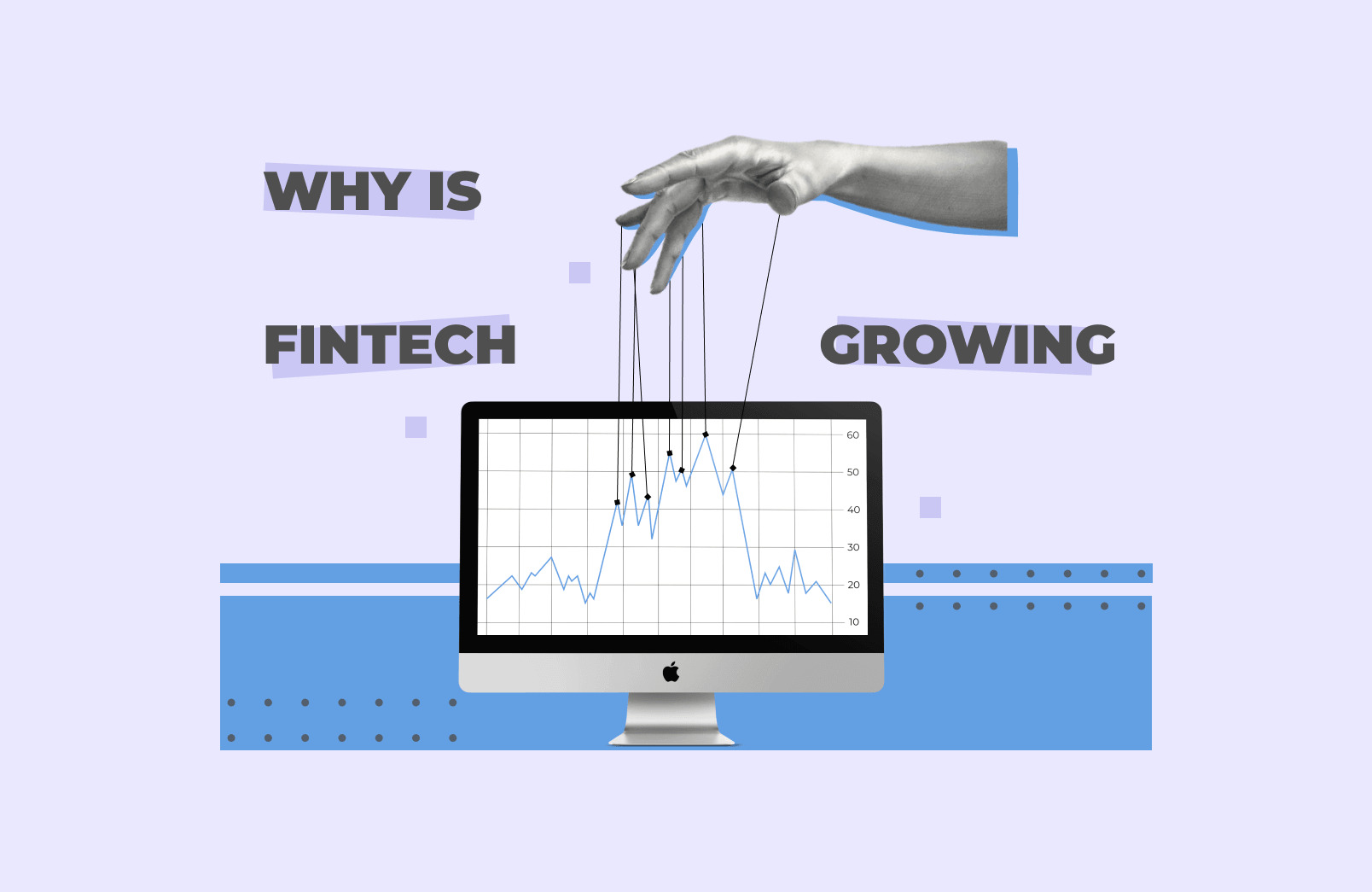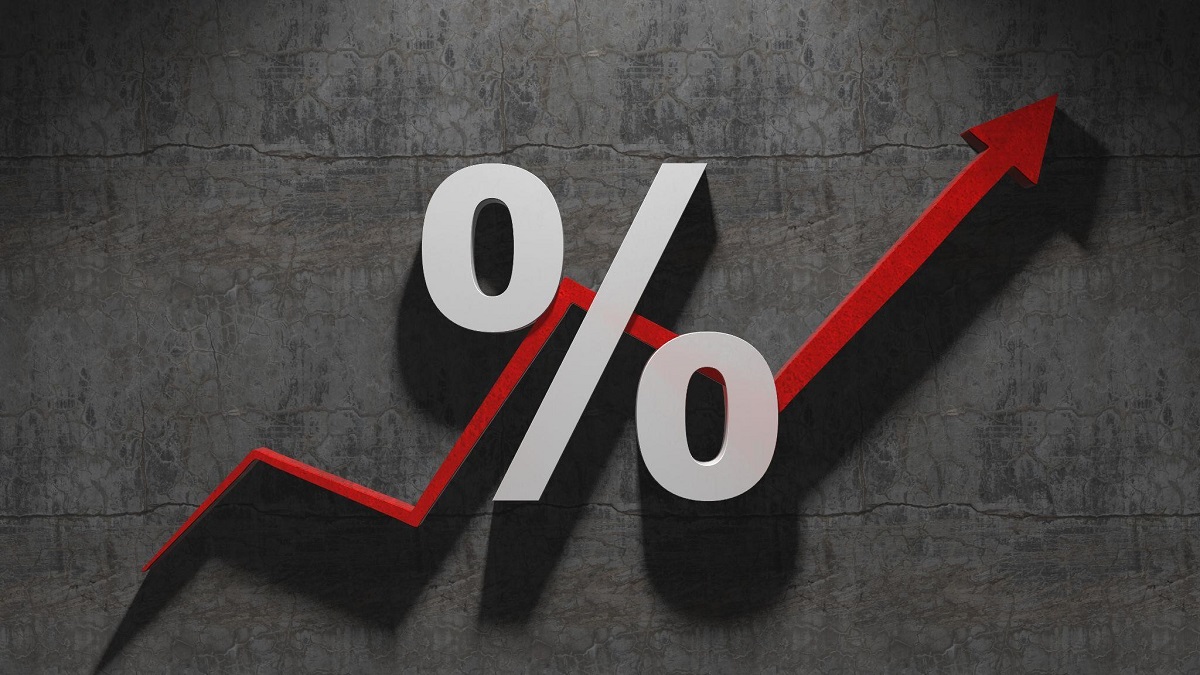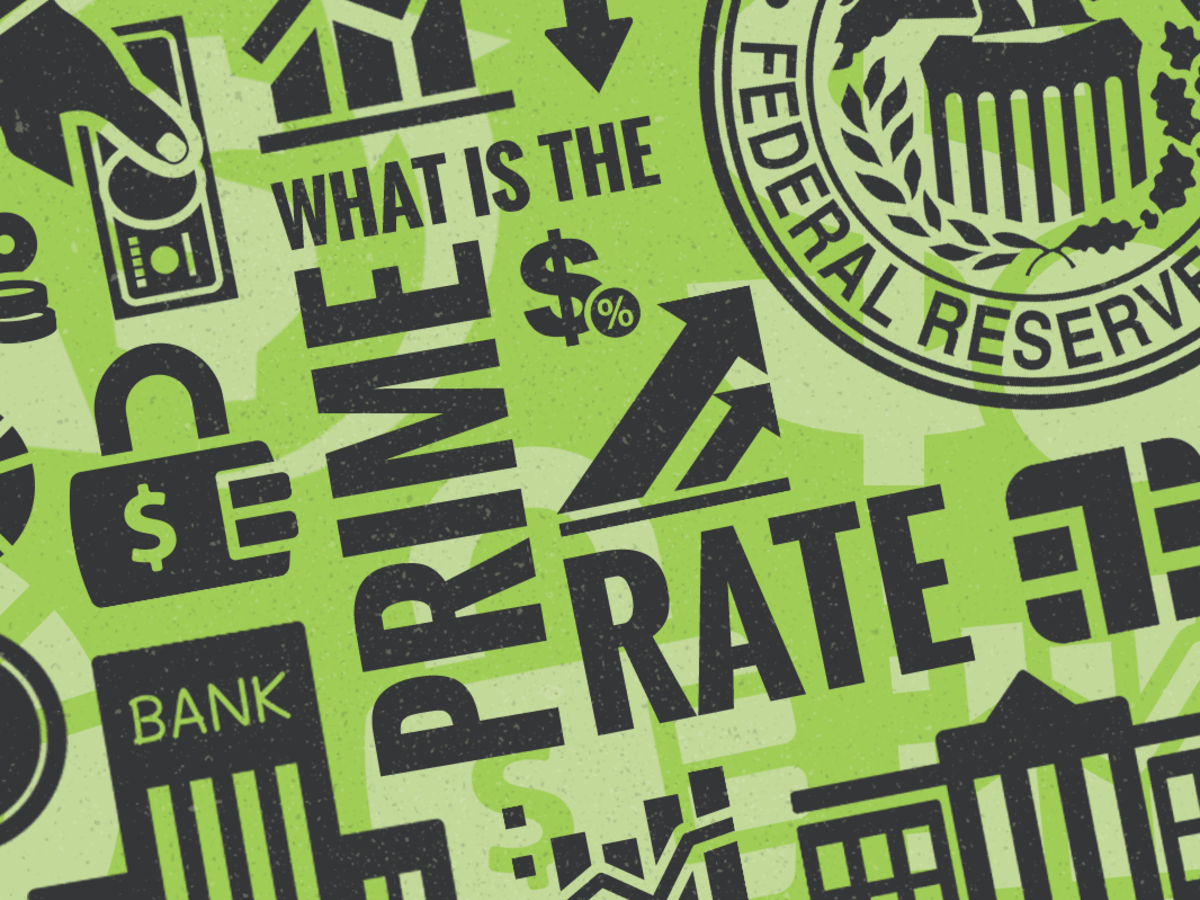Introduction
Welcome to the world of consumer lending in banking! Consumer lending refers to the process of providing individuals with financial resources in the form of loans to meet their personal needs and expenses. It plays a crucial role in the economy by enabling individuals to make important purchases and invest in various aspects of their lives.
In today’s fast-paced world, consumer lending has become a fundamental part of banking services. It allows consumers to access funds for a wide range of purposes, such as purchasing a home, buying a car, funding educational expenses, or simply managing unexpected financial challenges.
The concept of consumer lending revolves around the idea of granting loans to individuals who are classified as consumers rather than businesses or corporations. These loans are typically offered by banks, credit unions, and other financial institutions, with specific terms and conditions that govern the borrowing process.
Consumer lending encompasses various types of loans, each tailored to meet specific needs and requirements. It is essential for borrowers to understand the different loan options available to them, as well as the benefits and risks associated with each. This knowledge empowers consumers to make informed decisions regarding their financial well-being.
Throughout this article, we will delve into the realm of consumer lending and explore the different types of loans that fall under its umbrella, including personal loans, auto loans, home loans, and credit cards. We will also examine the benefits that consumers can enjoy when using these loan products, as well as the potential risks they may face.
So, whether you’re a first-time borrower or someone looking to gain a deeper understanding of consumer lending, this article will provide you with valuable insights to navigate the world of consumer loans confidently. Let’s embark on this informative journey together!
Definition of Consumer Lending
Consumer lending is a financial service provided by banks and financial institutions to individuals for personal use. It involves the granting of loans to consumers, enabling them to meet their immediate financial needs and achieve their long-term goals. Consumer loans are different from business loans, as they are specifically designed to cater to the personal and household expenses of individuals.
Consumer lending encompasses a wide range of financial products, including personal loans, auto loans, home loans, and credit cards. These loan products come with their own terms, interest rates, and repayment options, which are dependent on factors such as the borrower’s creditworthiness, income, and the purpose of the loan.
One of the distinguishing features of consumer lending is that it involves lending money to individuals who have a regular income and a verifiable credit history. This allows lenders to assess the borrower’s ability to repay the loan. The borrower’s creditworthiness is typically evaluated based on their credit score, income stability, and existing debt obligations.
Consumer lending plays a crucial role in the economy by providing individuals with the financial means to make important purchases and investments. Whether it’s buying a house, financing a car, paying for education, or managing unexpected expenses, consumer loans offer a convenient solution for individuals to access funds when needed.
Moreover, consumer lending is governed by strict regulations and lending practices to ensure the protection of borrowers. These regulations aim to promote responsible lending and protect consumers from predatory lending practices that may lead to financial hardships.
In summary, consumer lending refers to the provision of loans to individuals for personal use. It enables individuals to meet their financial needs and goals by accessing funds from banks and financial institutions. Understanding the concept of consumer lending is essential for borrowers, as it empowers them to make informed decisions regarding their financial well-being.+
Types of Consumer Loans
Consumer lending encompasses various types of loans, each tailored to meet specific needs and requirements. Let’s explore some of the most common types of consumer loans:
- Personal Loans: Personal loans are unsecured loans offered to individuals for personal use. They can be used to consolidate debt, cover medical expenses, finance a vacation, or any other personal financial need. Personal loans typically have fixed interest rates and repayment terms.
- Auto Loans: Auto loans are specifically designed to finance the purchase of a vehicle. Whether it’s a car, truck, or motorcycle, auto loans provide borrowers with the funds needed to make the purchase. These loans may have fixed or variable interest rates and repayment terms ranging from a few years to several years.
- Home Loans: Home loans, also known as mortgages, enable individuals to purchase or refinance a home. These loans are secured by the property, which means that the lender has the right to repossess the property if the borrower fails to make the mortgage payments. Home loans have different types, including fixed-rate mortgages and adjustable-rate mortgages.
- Credit Cards: Credit cards are a popular form of consumer lending that allows individuals to borrow money up to a pre-approved credit limit. Cardholders can use their credit cards to make purchases and pay them off over time or in monthly installments. Credit cards attract interest if the balance is not paid in full each month and may come with additional fees and rewards programs.
These are just a few examples of the types of consumer loans available in the market. It’s essential for borrowers to carefully consider their needs and financial situation when choosing the most suitable loan product.
When applying for a consumer loan, it’s important to understand the terms and conditions associated with the loan, including the interest rate, repayment schedule, fees, and penalties. Borrowers should also consider factors such as their credit score, income stability, and existing debt obligations, as these factors can impact the loan approval process and terms offered by lenders.
By understanding the different types of consumer loans available, borrowers can make informed decisions and select the loan product that best aligns with their financial goals and needs.
Personal Loans
Personal loans are a type of consumer loan that is versatile and can be used for a wide range of personal financial needs. Whether you’re planning a wedding, consolidating debt, or covering emergency expenses, personal loans offer a convenient solution to access funds.
Unlike other types of loans, personal loans are typically unsecured, which means they don’t require collateral. This makes them an attractive option for borrowers who don’t want to pledge an asset as security. However, since personal loans are unsecured, they often come with higher interest rates compared to secured loans.
One of the advantages of personal loans is the flexibility they offer in terms of loan amounts and repayment terms. Lenders usually offer a range of loan amounts, allowing borrowers to choose the amount that best suits their needs. Additionally, personal loans usually have fixed interest rates and fixed monthly payments, making it easier for borrowers to budget and plan their repayments.
Personal loans also have the potential to help borrowers improve their credit scores. Making timely payments on a personal loan can demonstrate responsible financial behavior and positively impact a borrower’s credit history. This, in turn, can lead to better access to credit and more favorable loan terms in the future.
However, it’s important for borrowers to be cautious when considering a personal loan. The ease of access to funds and the flexibility of use can sometimes tempt individuals to take on more debt than they can afford. Before applying for a personal loan, it’s crucial to assess your financial situation and ensure that you can comfortably manage the loan repayment schedule.
When applying for a personal loan, borrowers should compare offers from different lenders to find the most competitive interest rates and terms. Factors such as credit score, income, and existing debt obligations will affect the loan approval process and the terms offered by lenders.
In summary, personal loans are a versatile form of consumer lending that can be used for various personal financial purposes. They offer flexibility, but borrowers must carefully consider their financial situation and repayment capabilities before taking on a personal loan. By using personal loans responsibly, borrowers can access funds and achieve their financial goals.
Auto Loans
Auto loans are an essential component of consumer lending, providing individuals with the necessary funds to purchase a vehicle. Whether for personal use or business purposes, auto loans make owning a car more affordable and accessible for many people.
Auto loans can be secured or unsecured, depending on the lender’s requirements and the borrower’s financial situation. Secured auto loans use the vehicle itself as collateral, which means the lender can repossess the vehicle if the borrower fails to make timely repayments. Unsecured auto loans, on the other hand, do not require collateral but often carry higher interest rates to compensate for the increased risk to the lender.
One of the key considerations when obtaining an auto loan is the interest rate. The interest rate on an auto loan can vary depending on factors such as the borrower’s creditworthiness, the term of the loan, and the type of vehicle being financed. Generally, borrowers with a higher credit score are more likely to qualify for lower interest rates, resulting in lower overall borrowing costs.
Auto loans typically come with fixed repayment terms, typically ranging from 3 to 7 years. Longer loan terms offer lower monthly payments but result in higher overall interest costs. Shorter loan terms, on the other hand, involve higher monthly payments but allow borrowers to pay off their loan faster and potentially save on interest charges.
When shopping for an auto loan, it’s important to consider the total cost of the loan, including interest charges and any additional fees. It’s also advisable to get pre-approved for a loan before visiting car dealerships. This not only gives borrowers a clear understanding of their budget but also puts them in a stronger negotiating position when it comes to the vehicle’s price.
Before signing any loan agreement, it is important to carefully review the terms and conditions, including the interest rate, repayment schedule, and any potential penalties or fees for early repayment or late payments.
Auto loans offer individuals the opportunity to purchase a vehicle without needing to pay the full amount upfront. By understanding the details and terms of the loan, borrowers can make informed decisions and select an auto loan that aligns with their financial goals and budget.
Home Loans
Home loans, also known as mortgages, are a type of consumer loan specifically designed to help individuals finance the purchase of a home. Homeownership is a significant milestone for many, and home loans provide the financial means to make this dream a reality.
Home loans are secured loans, meaning that the property being purchased serves as collateral for the loan. This provides lenders with a level of security, as they have the right to repossess the property if the borrower fails to make timely mortgage payments. The terms and conditions of home loans can vary depending on factors such as the borrower’s creditworthiness, income, and the amount being borrowed.
One of the critical components of a home loan is the interest rate. Home loans may come with fixed or adjustable interest rates. With a fixed-rate mortgage, the interest rate remains constant throughout the loan term, providing borrowers with predictable monthly payments. Adjustable-rate mortgages, on the other hand, have interest rates that fluctuate over time based on market conditions, potentially leading to changes in monthly payments.
Home loans often have longer repayment terms compared to other consumer loans, typically ranging from 15 to 30 years. The extended repayment period allows borrowers to spread out their mortgage payments over a more extended period, resulting in lower monthly payments. However, it’s important to note that longer loan terms also result in higher overall interest costs.
When applying for a home loan, borrowers must undergo a rigorous approval process. Lenders evaluate factors such as credit history, income stability, employment history, and the borrower’s debt-to-income ratio. It’s crucial for borrowers to maintain a good credit score and demonstrate a strong financial profile to increase their chances of securing favorable loan terms.
In addition to traditional home loans, there are other types of home financing options available to borrowers. These include government-backed loans like FHA loans and VA loans, which offer more flexible qualification requirements and lower down payment options for eligible borrowers.
Home loans are a significant financial commitment and require careful consideration. It’s important for borrowers to calculate their budget and determine how much house they can realistically afford. It’s also advisable to shop around for the best mortgage rates and terms, comparing offers from multiple lenders.
By understanding the details and terms of home loans, borrowers can make informed decisions and choose the mortgage option that best fits their needs, financial goals, and budget.
Credit Cards
Credit cards are a popular form of consumer lending that offers individuals a convenient way to make purchases and manage their finances. A credit card is a payment card issued by a financial institution that allows the cardholder to borrow funds up to a certain credit limit. It offers flexibility and various benefits, but it’s important to use credit cards responsibly to avoid financial pitfalls.
One of the primary benefits of credit cards is the ability to make purchases without needing to carry cash. Credit cards are widely accepted in stores, online, and in various countries around the world, making them a convenient payment option for everyday expenses, travel, and emergencies.
Credit cards also offer a grace period, typically around 21-25 days, where no interest is charged if the cardholder pays the full balance by the due date. This feature allows cardholders to use credit cards as short-term loans without incurring interest charges, provided they pay off the balance within the grace period.
Credit cards provide additional benefits such as rewards programs, cash back offers, and travel perks. These incentives can include points for purchases, airline miles, or discounts at partner merchants. However, it’s important to carefully review the terms and conditions of these rewards programs and assess whether they align with your spending habits and financial goals.
Using credit cards responsibly can also help build and improve your credit history. Regular and on-time payments positively impact your credit score, which is a crucial factor in obtaining favorable loan terms in the future, such as for a mortgage or car loan. However, it’s important to keep your credit utilization ratio low by not maxing out your credit cards, as high utilization can negatively impact your credit score.
It’s worth noting that credit cards come with potential risks and downsides if not handled responsibly. One of the most significant risks is the accumulation of credit card debt if balances are not paid off in full each month. Credit cards often carry high-interest rates, and if balances are not paid on time or only the minimum payment is made, interest charges can quickly add up, leading to a cycle of debt.
Additionally, credit cards can lead to impulsive spending habits if not used responsibly. It’s crucial to create a budget and track your expenses to ensure that credit card purchases align with your financial means and goals.
In summary, credit cards offer individuals flexibility and convenience in making purchases and managing their finances. When used responsibly, they can provide benefits such as cash back or rewards programs and help build credit history. However, it’s crucial to use credit cards wisely, pay off balances on time, and avoid excessive debt to avoid financial difficulties.
Benefits of Consumer Lending
Consumer lending offers numerous benefits that can positively impact individuals’ financial well-being. Let’s explore some of the key advantages of consumer lending:
1. Access to Funds: Consumer lending provides individuals with the opportunity to access funds when they need them the most. Whether it’s for unexpected expenses, major purchases, or investments in education, consumer loans offer a quick and convenient source of financing.
2. Flexibility in Repayment: Consumer loans come with various repayment options, allowing borrowers to choose a repayment schedule that suits their financial situation. This flexibility ensures that borrowers can manage their loan payments comfortably without putting too much strain on their monthly budget.
3. Building Credit History: Responsible borrowing and timely repayment of consumer loans can help individuals build a positive credit history. A good credit history is crucial for future financial endeavors, such as obtaining a mortgage or securing lower interest rates on future loans.
4. Potential for Lower Interest Rates: If borrowers have a solid credit history and a good credit score, they are likely to qualify for lower interest rates on consumer loans. This can result in significant savings over the life of the loan and make borrowing more affordable.
5. Convenience and Time Savings: Consumer lending provides a convenient and time-saving alternative to saving up for large purchases. Instead of waiting for months or even years to accumulate the necessary funds, borrowers can take advantage of consumer loans to make their desired purchases promptly.
6. Financing Options for Different Needs: Consumer lending offers a variety of loan products tailored to different needs. Whether someone is looking to finance a vehicle, purchase a home, or consolidate debt, consumer loans provide borrowers with specific options to fit their unique requirements.
7. Improved Quality of Life: Consumer loans can help enhance an individual’s quality of life by enabling them to make important investments. Whether it’s improving one’s home, pursuing higher education, or upgrading to a reliable vehicle, consumer lending can provide the necessary funds to achieve these goals.
It’s important for individuals to consider their financial situation and loan terms carefully before borrowing. By using consumer loans responsibly, borrowers can enjoy the benefits they offer while effectively managing their debt and financial goals.
Access to Funds
One of the primary benefits of consumer lending is the access to funds it provides individuals. Consumer loans offer a convenient solution for people who need financial resources to meet various expenses, make purchases, or invest in their future.
Life is full of unexpected events and expenses, such as medical emergencies, car repairs, or home renovations. Consumer lending offers a quick and reliable source of funds during these times of need, allowing individuals to address these expenses without delay.
Consumer loans also play a crucial role in enabling individuals to make major purchases that might otherwise be financially challenging. Whether it’s buying a new car, purchasing a home, or investing in higher education, consumer loans provide the necessary funds to make these significant investments.
Access to funds through consumer lending streamlines the purchasing process and saves individuals the trouble of having to save up for an extended period. Instead of waiting to accumulate the necessary funds, consumer loans provide the opportunity to make the purchase promptly, allowing individuals to acquire what they need when they need it.
Another advantage of consumer lending is the convenience it offers. The application process is often streamlined, and borrowers can usually complete it online or at a local bank branch. The funds are then disbursed quickly, providing immediate access to the needed funds. This accessibility makes consumer lending an ideal solution for urgent or time-sensitive financial needs.
Furthermore, consumer lending allows individuals to manage their finances efficiently by providing them with the flexibility to cover expenses over time. Whether it’s through installment payments or a flexible line of credit, consumer loans accommodate various repayment options, allowing borrowers to budget and plan their finances accordingly.
However, it’s important for individuals to assess their financial situation and borrowing needs responsibly. While consumer lending provides access to funds, it’s essential to borrow only what is truly necessary and within one’s means to repay comfortably.
In summary, consumer lending provides individuals with convenient access to funds when unforeseen expenses arise or significant investments need to be made. Whether it’s handling emergencies, making important purchases, or improving one’s quality of life, consumer loans offer a quick and reliable financial solution. By utilizing these funds responsibly, individuals can effectively manage their financial needs and goals.
Flexibility in Repayment
When it comes to consumer lending, one of the significant benefits borrowers enjoy is the flexibility in repayment options. Unlike other forms of financing, consumer loans offer individuals the freedom to choose a repayment schedule that best fits their financial situation and preferences.
Many consumer loans provide borrowers with the option to select the duration of their repayment period. This flexibility allows borrowers to tailor their loan term to their financial goals and capabilities. They can opt for shorter terms to repay the loan quickly and save on interest charges, or they can choose longer terms to have lower monthly payments and a more manageable cash flow.
Having flexibility in repayment ensures that borrowers can comfortably meet their financial obligations without undue stress. By customizing the repayment schedule, borrowers have better control over their personal budgeting and can allocate funds efficiently to other essential expenses.
In addition to the flexibility in choosing the repayment term, consumer loans often offer various payment options. Borrowers can typically make their payments on a monthly, bi-weekly, or even weekly basis, depending on the terms of the loan. This flexibility allows borrowers to align their loan repayments with their income frequency and cash flow, making it easier to manage their financial obligations.
Many consumer loans also provide the option to make extra payments or pay off the loan early without incurring any prepayment penalties. This feature allows borrowers to save on interest costs by reducing the loan balance ahead of schedule. It gives individuals the opportunity to pay off their debt faster and potentially achieve financial freedom sooner.
The ability to select a repayment schedule that suits their needs and preferences empowers borrowers to have more control over their finances. It enables them to plan and manage their cash flow effectively, ensuring that they can meet their loan obligations without sacrificing their everyday needs and financial stability.
It’s worth noting that while flexible repayment options can be beneficial, borrowers should still consider their financial circumstances and borrowing capacity before committing to a particular repayment schedule. It’s important to balance the desire for flexibility with the ability to manage debt responsibly and avoid overextending oneself financially.
In summary, the flexibility in repayment options offered by consumer loans allows borrowers to choose a repayment schedule that aligns with their financial goals and capabilities. This flexibility empowers individuals to manage their financial obligations effectively, make timely payments, and stay on track towards achieving their financial objectives.
Building Credit History
Consumer lending plays a vital role in helping individuals build and establish a strong credit history. A good credit history is essential in today’s financial landscape, as it can significantly impact an individual’s ability to secure future loans, obtain favorable interest rates, and even rent an apartment or get a job.
One of the primary ways that consumer lending contributes to building credit history is through responsible borrowing and timely repayment of loans. When individuals take out and successfully repay consumer loans, it demonstrates to lenders and credit bureaus that they can be trusted to manage debt responsibly.
Each time borrowers make timely payments on their loans, it positively impacts their credit history. On the other hand, late or missed payments can have a negative effect on one’s credit score. Building a positive credit history involves consistently making payments on time and in the agreed-upon amounts.
Consumer loans are reported to credit bureaus, such as Equifax, Experian, and TransUnion, which maintain individuals’ credit reports. These credit reports reflect individuals’ borrowing history, including their payment history, the amount owed, and the length of their credit history. Lenders use this information to make decisions about lending to individuals in the future.
Over time, a strong credit history can lead to improved creditworthiness, which means borrowers may qualify for lower interest rates on future loans. This can save individuals significant amounts of money in interest charges over the life of the loan.
Building credit history through consumer lending can also open doors to better financial opportunities. For example, a positive credit history may enable individuals to secure a mortgage, finance a car, or obtain a credit card with more favorable terms and higher credit limits.
It’s important to note that building credit history requires a deliberate and responsible approach to borrowing. It’s crucial to borrow only what is needed, make payments on time, and avoid taking on excessive debt. Keeping credit utilization low, which is the ratio of credit used to credit available, is also important in building a positive credit history.
While consumer lending contributes to building credit history, it’s also essential to regularly monitor one’s credit report for accuracy and address any errors promptly. Monitoring credit allows for early detection of potential issues and ensures that individuals have an accurate reflection of their creditworthiness.
In summary, consumer lending serves as a means to build credit history by demonstrating responsible borrowing and timely repayment of loans. A strong credit history opens doors to future financial opportunities and can lead to better interest rates and borrowing terms. Building credit history requires responsible financial management and regular monitoring of credit reports for accuracy.
Risks of Consumer Lending
While consumer lending offers many benefits, it’s essential to be aware of the potential risks involved. Understanding these risks can help individuals make informed decisions and manage their debt responsibly. Let’s explore some of the key risks associated with consumer lending:
1. High Interest Rates: One of the primary risks of consumer lending is the potential for high-interest rates. Depending on the type of loan, creditworthiness of the borrower, and prevailing market conditions, interest rates on consumer loans can be relatively high. This can result in higher overall borrowing costs, especially if the loan is not paid off quickly.
2. Potential Debt Burden: Taking on consumer loans without careful consideration of one’s financial situation can lead to excessive debt. If borrowers do not manage their loan repayments responsibly or borrow beyond their means, they may find themselves facing a debt burden that becomes challenging to overcome. It’s crucial to assess one’s ability to repay the loan comfortably before committing to borrowing.
3. Impact on Credit Score: Failing to make timely payments on consumer loans can have a negative impact on an individual’s credit score. Late or missed payments can lower the credit score and make it more difficult to secure future loans or obtain favorable interest rates in the future. It’s important to prioritize loan repayment and develop a responsible payment routine to maintain a good credit rating.
4. Hidden Fees and Intense Lending Practices: Some lenders may employ aggressive marketing tactics or impose hidden fees and penalties that can catch borrowers off guard. It’s crucial to carefully read the terms and conditions of a loan agreement, ask questions, and understand all the costs associated with the loan. Being aware of these potential pitfalls can help avoid unpleasant surprises.
5. Potential for Predatory Lending: Predatory lending practices, although less common, can be a risk in consumer lending. It’s important to research and choose reputable lenders and avoid those who engage in unfair or unethical practices. Borrowers should be wary of unsolicited offers, high-pressure sales tactics, and loans with excessively high interest rates or unfavorable terms.
6. Impact on Financial Stability: Borrowing beyond one’s means or being financially overextended can have a significant impact on overall financial stability. High debt levels can result in increased stress, difficulty managing monthly expenses, and limited financial flexibility for emergencies or unexpected expenses. It’s crucial to carefully assess affordability and make responsible borrowing decisions.
Being aware of these risks allows individuals to make informed decisions and approach consumer lending with caution. It’s important to carefully evaluate one’s financial situation, compare loan offers, understand the terms and conditions, and seek professional advice if needed to ensure responsible borrowing and financial well-being.
High Interest Rates
One of the primary risks associated with consumer lending is the potential for high-interest rates on loans. The interest rate determines the cost of borrowing and is a key factor in determining the overall affordability of a loan.
Lenders take into account several factors when determining the interest rate for consumer loans. These factors include the borrower’s creditworthiness, the type of loan, prevailing market conditions, and the duration of the loan. If a borrower has a lower credit score or deemed to be a higher lending risk, lenders may charge a higher interest rate to compensate for the increased risk.
The impact of high-interest rates on consumer loans can be significant. It can result in higher monthly payments and increased total borrowing costs. Even a small difference in interest rates can add up to substantial amounts over the life of a loan.
High-interest rates can make borrowing more expensive and put a strain on a borrower’s finances. It is important for borrowers to carefully consider the interest rates being offered and assess whether the loan is affordable within their budget. It’s advisable to compare rates from multiple lenders and negotiate where possible to secure the most favorable terms.
Another consideration is the impact of high-interest rates on the total interest paid over the life of the loan. A higher interest rate can result in a larger amount of interest paid on top of the principal loan amount. This means that borrowers may end up paying significantly more for the loan than anticipated, reducing the overall value of the funds borrowed.
Borrowers with high-interest loans may find it challenging to make timely payments and pay down the principal balance effectively. This can result in a prolonged repayment period and an increased overall financial burden.
To mitigate the impact of high-interest rates, it’s advisable for borrowers to work towards improving their creditworthiness. A better credit score can increase the chances of obtaining loans with lower interest rates in the future. By managing debt responsibly, making timely payments, and reducing outstanding balances, borrowers can enhance their creditworthiness over time.
Lastly, it’s important for borrowers to carefully review loan terms and conditions, including all applicable fees, before entering into a loan agreement. Some lenders may charge additional fees apart from the interest rate, such as origination fees or prepayment penalties. Understanding and comparing all associated costs can help borrowers make more informed decisions and avoid unnecessary financial burdens.
In summary, high-interest rates pose a significant risk in consumer lending, as they can impact the affordability and overall cost of borrowing. Borrowers should carefully assess their financial position, compare interest rates, and evaluate the long-term impact of high-interest loans before entering into any borrowing agreement.
Potential Debt Burden
One of the risks associated with consumer lending is the potential for individuals to experience a significant debt burden. Taking on consumer loans without careful consideration of one’s financial situation can lead to borrowing beyond one’s means and struggling to manage the resulting debt.
When individuals take on too much debt, it can strain their financial resources and create difficulty in meeting their monthly loan obligations. This can result in a cycle of debt where individuals may find themselves borrowing more to cover existing loan payments, leading to escalating debt levels.
It’s crucial for individuals to assess their financial capabilities carefully before committing to consumer loans. This includes evaluating their income, expenses, and debt-to-income ratio. Borrowers should consider how the loan repayments will fit into their budget and whether they have sufficient resources to meet their financial obligations comfortably.
Failure to manage debt responsibly can lead to a variety of negative consequences. It can impact an individual’s overall financial health, limit their ability to pursue other financial goals, and cause stress or financial strain on personal relationships.
Additionally, excessive debt can hinder the ability to save for future needs such as retirement, emergencies, or other important financial goals. Borrowers may find it challenging to allocate funds towards savings when a significant portion of their income is dedicated to debt repayment.
To avoid falling into a potential debt burden, it’s important to only borrow what is truly necessary and within one’s means to repay. Assessing affordability includes considering not just the initial loan payment, but also factoring in potential changes in income or other financial circumstances that could impact one’s ability to make loan repayments.
Developing a budget and financial plan can also help individuals manage their debt responsibly. By understanding their income, expenses, and financial goals, borrowers can prioritize loan repayments and allocate resources accordingly to avoid falling into a debt burden.
In cases where an individual finds themselves struggling with existing debt, it’s important to seek assistance promptly. There are resources available, such as credit counseling services, that can provide guidance and assistance in managing debt effectively. Taking proactive steps to address and manage a potential debt burden can help individuals regain control of their financial situation.
In summary, potential debt burden is a risk associated with consumer lending. Borrowing beyond one’s means or without careful consideration of one’s financial situation can lead to financial strain and difficulty in managing monthly loan payments. It’s important for individuals to assess affordability, develop a budget, and seek assistance when needed to avoid falling into a potential debt burden.
Impact on Credit Score
Consumer lending can have a significant impact on an individual’s credit score, which is a numerical representation of their creditworthiness. A credit score is an important financial metric used by lenders to assess the risk of lending to individuals. It plays a crucial role in determining whether individuals qualify for loans, credit cards, and other financial products, as well as the interest rates offered.
One of the primary factors that influence credit scores is the payment history on consumer loans. Making timely payments on loans demonstrates responsible financial behavior and can have a positive impact on credit scores. Conversely, late or missed payments can lower credit scores and make it more difficult to secure future credit.
The amount of debt owed, also known as credit utilization, is another factor that affects credit scores. High levels of debt compared to the available credit limit can lower credit scores. This is why it’s important for individuals to manage their debt responsibly and avoid maxing out credit cards or taking on excessive debt.
The length of an individual’s credit history is also taken into account when calculating credit scores. A longer credit history provides more data for lenders to assess a borrower’s creditworthiness. This is why it’s important to establish and maintain a positive credit history over time by making consistent and timely payments on consumer loans.
When individuals apply for new consumer loans or credit cards, it can also impact their credit scores. Each application for credit triggers a hard inquiry on the credit report, which can temporarily lower the credit score. Therefore, it’s important to carefully consider the need for new credit and minimize the number of credit applications made within a short period of time.
Understanding the impact of consumer lending on credit scores is crucial for individuals looking to maintain or improve their creditworthiness. A good credit score not only increases the likelihood of loan approval but also allows borrowers to access credit at more favorable interest rates and terms.
Borrowers should regularly monitor their credit reports to ensure accuracy and address any errors promptly. By checking their credit reports, individuals can identify and correct any inaccuracies that may negatively impact their credit scores.
It’s important to note that the impact on credit scores may vary depending on individual circumstances and credit reporting agencies. Different scoring models and algorithms are used by credit bureaus to calculate credit scores.
In summary, consumer lending has a direct impact on an individual’s credit score. Responsible borrowing and timely repayment of loans can lead to higher credit scores, making it easier to access future credit at more favorable terms. Managing debt responsibly, maintaining a positive payment history, and regularly monitoring credit reports can help individuals build and maintain a strong credit profile.
Conclusion
Consumer lending plays a vital role in our society, providing individuals with access to funds and financial resources to meet their personal needs and goals. From personal loans to auto loans, home loans, and credit cards, consumer lending offers a variety of loan products tailored to different requirements.
Throughout this article, we have explored the definition of consumer lending and delved into the various types of consumer loans available. We have discussed the benefits of consumer lending, such as the convenience of accessing funds when needed, the flexibility in repayment options, and the ability to build a positive credit history.
However, it’s important to be aware of the potential risks associated with consumer lending. High-interest rates, the potential for a debt burden, the impact on credit scores, and the possibility of predatory lending are all factors that individuals should consider and manage responsibly.
As borrowers, it is essential to approach consumer lending with careful consideration and a thorough understanding of one’s financial situation and goals. It is crucial to evaluate affordability, compare loan terms, and borrow responsibly to ensure a positive borrowing experience and maintain financial well-being.
In conclusion, consumer lending offers individuals the opportunity to access funds and achieve their financial aspirations. By understanding the various loan options, assessing affordability, and managing debt responsibly, individuals can make informed decisions and utilize consumer lending to their advantage, while minimizing the potential risks associated with borrowing.

























